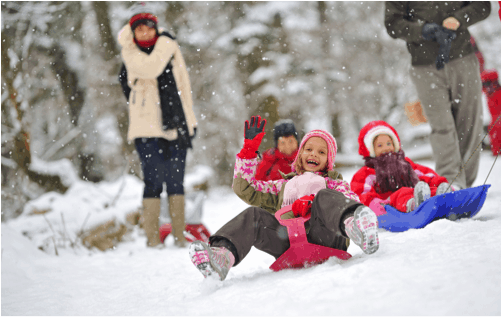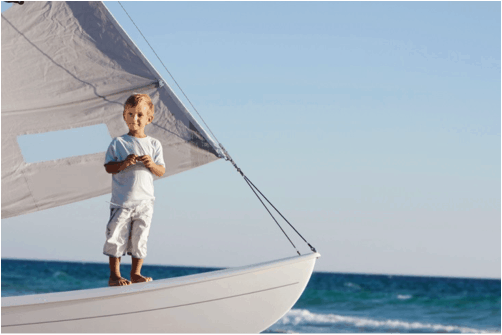U.S. CONSUMER PRODUCT SAFETY COMMISSION
WASHINGTON, DC 20207
CPSC DOCUMENT/FACT SHEET #323
Each year, about 200,000 children are treated in U.S. hospital emergency rooms for playground equipment-related injuries – an estimated 148,000 of these injuries involve public playground equipment and an estimated 51,000 involve home playground equipment. Also, about 15 children die each year as a result of playground equipment-related incidents. Most of the injuries are the result of falls. These are primarily falls to the ground below the equipment, but falls from one piece of equipment to another are also reported. Most of the deaths are due to strangulations, though some are due to falls.
1. Protective Surfacing – Since almost 60% of all injuries are caused by falls to the ground, protective surfacing under and around all playground equipment can reduce the risk of serious head injury.
– Falls on asphalt and concrete can result in serious head injury and death. Do not place playground equipment over these surfaces. Also grass and turf lose their ability to absorb shock through wear and environmental conditions. Always use protective surfacing.
– Certain loose-fill surfacing materials are acceptable, such as the types and depths shown in the table.
– Certain manufactured synthetic surfaces also are acceptable; however, test data on shock absorbing performance should be requested from the manufacturer.
Fall Height In Feet From Which A Life Threatening
Head Injury Would Not Be Expected
| Type of Material | 6″ Depth | 9″ Depth | 12″ Depth |
| Double Shredded Bark Mulch | 6 | 10 | 11 |
| Wood Chips | 7 | 10 | 11 |
| Fine Sand | 5 | 5 | 9 |
| Fine Grave | 6 | 7 | 10 |
2. Use Zones – A use zone, covered with a protective surfacing material, is essential under and around equipment where a child might fall. This area should be free of other equipment and obstacles onto which a child might fall.
– Stationary climbing equipment and slides should have a use zone extending a minimum of 6′ in all directions from the perimeter of the equipment.
– Swings should have a use zone extending a minimum of 6′ from the outer edge of the support structure on each side. The use zone in front and back of the swing should extend out a minimum distance of twice the height of the swing as measured from the ground to the swing hangers on support structure.
3. Swing Spacing – To prevent injuries from impact with moving swings, swings should not be too close together or too close to support structures. Swing spacing should be:
– At least 8 inches between suspended swings and between a swing and the support frame.
– At least 16 inches from suing support frame to a pendulum see-saw.
– Minimum clearance between the ground and underside of swing
seat should be 8 inches.
– Swing sets should be securely anchored.
4. Elevated Surfaces – Platforms more than 30″ above the ground should have guardrails to prevent falls.
5. Potential Head Entrapment Hazards – In general, openings that are closed on all sides, should be less than 3 1/2″ or greater than 9″. Openings that are between 3′ 1/2″ and 9″ present a head entrapment hazard because they are large enough to permit a child’s body to go through, but are too small to permit the head to go trough. When children enter such openings, feet first, they may become entrapped by the head and strangle.
6. Potential Entrapment and Strangulation Hazards – Open “S” hooks, especially on swings, and any protrusions or equipment component/hardware which may act as hooks or catch-points can entangle with children’s clothing and cause strangulation incidents. Close “S” hooks as tightly as possible and eliminate protrusions or catch-points on playground equipment.
7. Pinch or Crush Points – There should be no exposed moving parts which may present a pinching or crushing hazard.
8. Playground Maintenance – Playgrounds should be inspected on a regular basis. Inspect protective surfacing especially mulch, and maintain the proper depth. If any of the following conditions are noted, they should be removed, corrected or repaired immediately to prevent injuries:
– Hardware is loose or worn, or that has protrusions or
projections.
– Ropes, and items with cords placed around the neck can get caught on playground equipment and strangle a child. Many children have died when a rope they were wearing got caught on playground equipment, or they became entangled in a rope.
– Supervise, and teach your child safe play. Teach your child not to walk or play close to a moving swing, and not to tie ropes to playground equipment.
– Exposed equipment footings.
– Scattered debris, litter, rocks, or tree roots.
– Rust and chipped paint on metal components.
– Splinters, large cracks, and decayed wood components.
– Deterioration and corrosion on structural components which
connect to the ground.
– Missing or damaged equipment components, such as handholds,
guardrails, swing seats.
For more information on playground safety, refer to CPSC’s Handbook for Public Playground Safety. To obtain a copy, send a postcard with your name, address, and name of the publication to U.S. Consumer Product Safety Commission, Washington, D.C. 20207
To report a dangerous product or a product-related injury and for information on CPSC’s fax-on-demand service, call CPSC’s hotline at (800)638-2772 or CPSC’s teletypewriter at (800)638-8270. To order a press release through fax-on-demand, call (301)501-0051 from the handset of your fax machine and enter the release number.
Consumers can obtain releases and recall information from CPSC’s web site at http://www.cpsc.gov, gopher site at cpsc.gov or report product hazards to [email protected]
This document is in the public domain. it may be reproduced, in part or in whole, without permission by an individual or organization without permission. If it is reproduced, However, the Commission would appreciate knowing how it is used. Write to the Consumer Product Safety Commission, Office of Information and Public Affairs, Washington, D.C. 20207.




